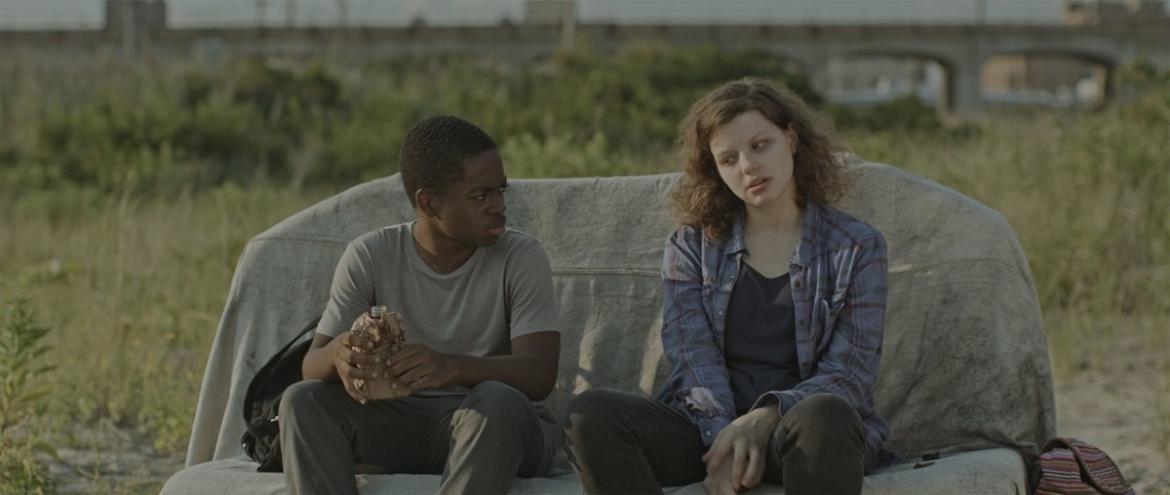
The Transfiguration (Movie Review)
Should vampire films hold sway in theaters once more, let’s hope that they’re like The Transfiguration. Michael O’Shea’s directorial debut is quiet and disturbing – embracing what it so reverently admires, but keenly aware that it cannot tread previous ground.
The Transfiguration takes the familiar elements of the vampire flick – bloodsucking, loneliness, romance – and molds them into a compelling exploration of a kid on the outside; much like the fictitious creatures he cherishes. The question of whether Milo (Eric Ruffin), a black teen living in a New York City project with his PTSD-inflicted brother, is or is not a vampire doesn’t matter – nor should it. O’Shea is far more interested in questioning whether the circumstances in Milo’s life that have led him to be the depraved “freak” his neighbors think him to be.
The introduction of new resident Sophie (Chloe Levine) sparks a change in young Milo. He still feeds on the blood of others, but becomes increasingly aware of his actions having negative consequences. Milo disregards his self-imposed code, making him question whether circumstances like his crippling poverty, mentally ill brother, and suicidal mother have played a role in his fascination and acceptance of the macabre. It is Milo’s awakening self-reflection that helps The Transfiguration transcend its predecessors (if only slightly) to ponder its central question: what makes a monster? It’s here you can tell O’Shea is bursting with ideas that haven’t been explored in the genre this realistically before. He’s making strides even if they’re messy and occasionally underdeveloped.
Milo is unremorseful of his actions, and Ruffin plays him with a silent unease that he carries throughout the film. It’s a commendable dedication to a complex role that at moments is powerful, and at others one-note. Milo’s adoption of a vampire identity presents a compelling foil to characters in similar situations around him. Most of the other boys revel in gang activity or drug use. And when his vampire identity is shed, Milo’s behavior is no different. O’Shea’s subtly is, perhaps, what keeps most of the film out of grasp until the end of the second act, and even then do we glean a complete picture of Milo’s life. It’s a disorienting tactic that feels more tired than it should. However, the metaphor (if we can call reality that) is clear, as is the stylistic choice to employ vampirism.
The horror genre has historically been a vehicle for exploring social turmoil, and O’Shea weaves thoughtful threads of race, class, and gender throughout his debut. The dynamics between Milo and Sophie are handled in a deft yet impactful manner, which makes The Transfiguration all the more impressive for O’Shea’s level control. In many ways, The Transfiguration is the American version of Let the Right One In that was needed. And while the ending of the film is as brutally realistic as its subject matter allows, O’Shea never vilifies his subject, nor incites a sudden transformation that quells the hardships. The film merely seeks to offer a heighten understanding of a world of which many are unaware.
For that, The Transfiguration is not an easy or enjoyable watch. But the film’s greater truths are handled with enough precision that O’Shea’s career, whether in the genre or not, looks promising.

